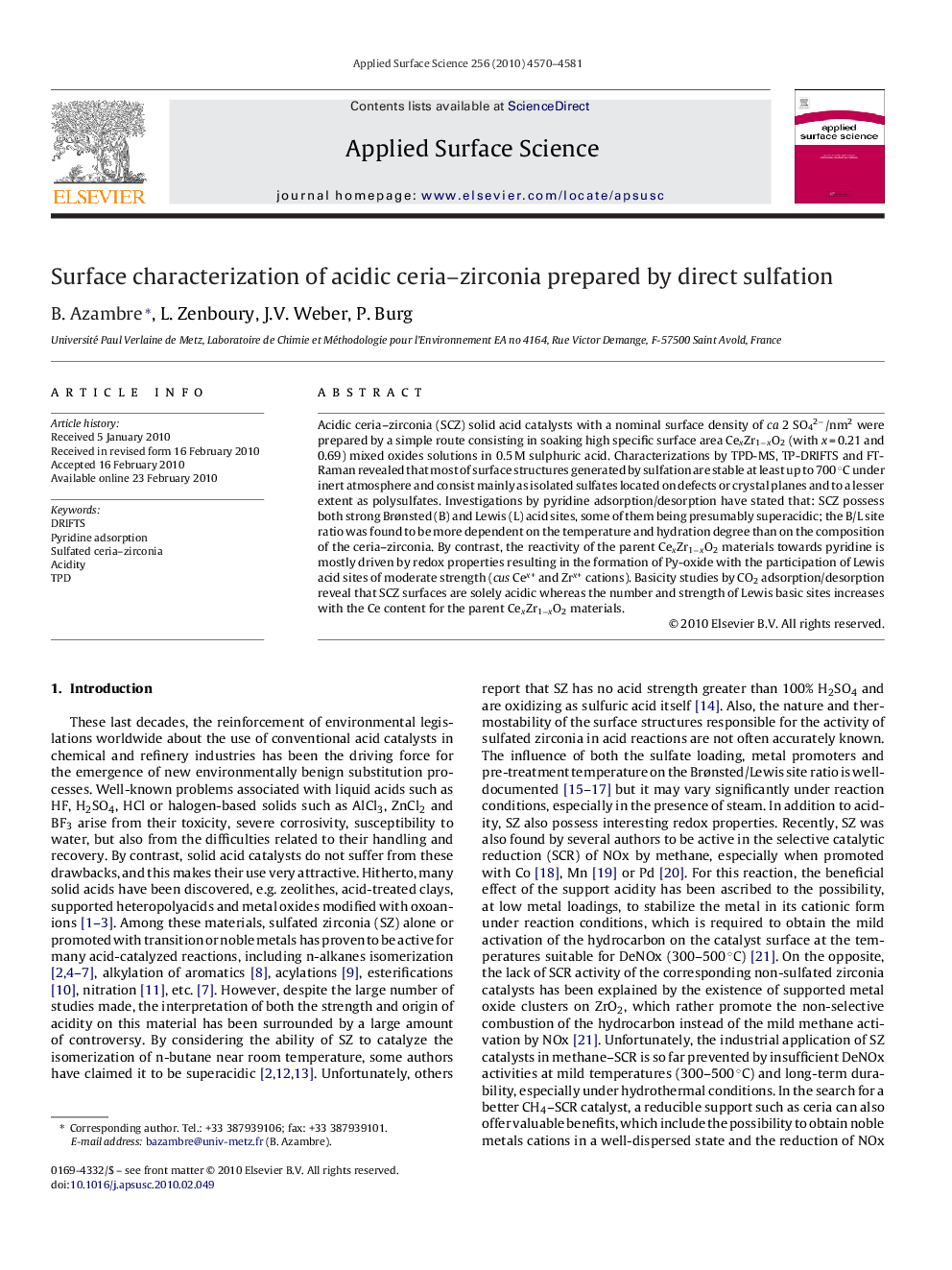| Article ID | Journal | Published Year | Pages | File Type |
|---|---|---|---|---|
| 5365710 | Applied Surface Science | 2010 | 12 Pages |
Acidic ceria-zirconia (SCZ) solid acid catalysts with a nominal surface density of ca 2 SO42â/nm2 were prepared by a simple route consisting in soaking high specific surface area CexZr1âxO2 (with x = 0.21 and 0.69) mixed oxides solutions in 0.5 M sulphuric acid. Characterizations by TPD-MS, TP-DRIFTS and FT-Raman revealed that most of surface structures generated by sulfation are stable at least up to 700 °C under inert atmosphere and consist mainly as isolated sulfates located on defects or crystal planes and to a lesser extent as polysulfates. Investigations by pyridine adsorption/desorption have stated that: SCZ possess both strong Brønsted (B) and Lewis (L) acid sites, some of them being presumably superacidic; the B/L site ratio was found to be more dependent on the temperature and hydration degree than on the composition of the ceria-zirconia. By contrast, the reactivity of the parent CexZr1âxO2 materials towards pyridine is mostly driven by redox properties resulting in the formation of Py-oxide with the participation of Lewis acid sites of moderate strength (cus Cex+ and Zrx+ cations). Basicity studies by CO2 adsorption/desorption reveal that SCZ surfaces are solely acidic whereas the number and strength of Lewis basic sites increases with the Ce content for the parent CexZr1âxO2 materials.
